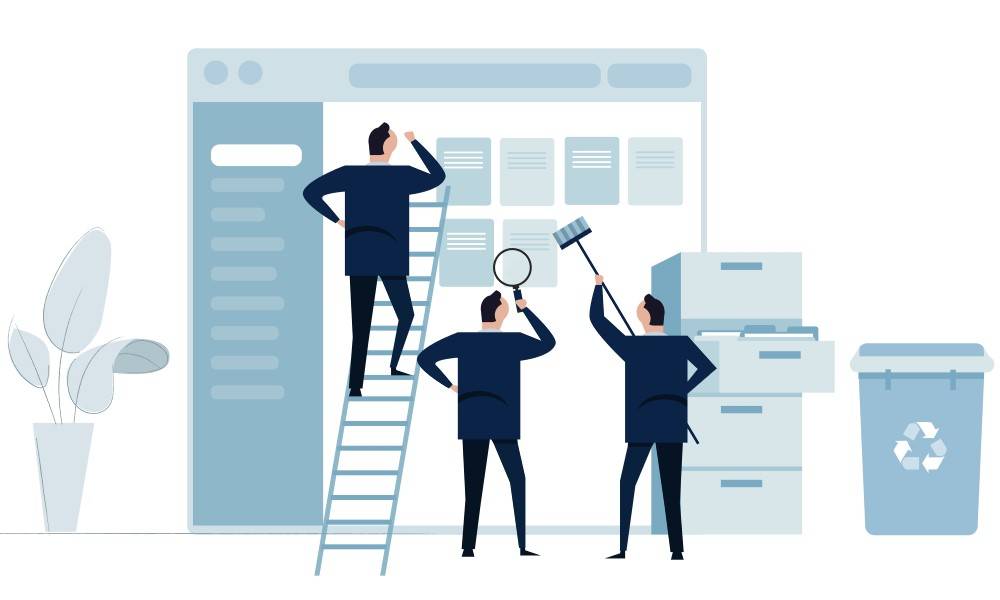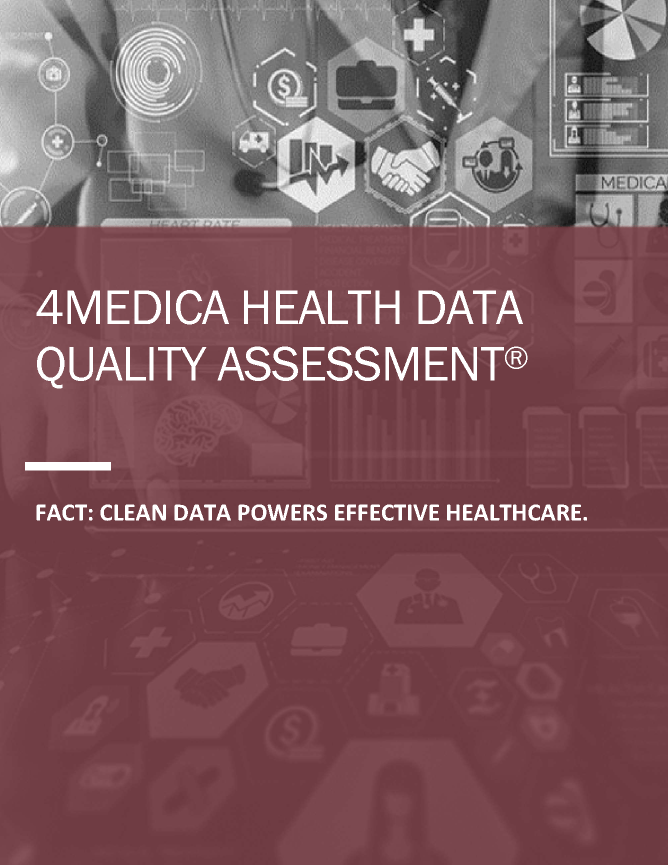Patient records are a critical part of providing efficient and accurate healthcare. When records are inaccurate, outdated, or missing values — or duplicate records obscure potentially critical information — the decision-making ability of medical professionals is undermined.
This is where data cleansing tools come in.
Data cleansing seeks to correct, verify, and standardize patient data to ensure accuracy and efficiency in treatment and reduce risk.

What Is Data Cleansing?
Data cleansing in healthcare is the process of cleaning up and verifying patient records to maximize accuracy. The data-cleaning process may involve:
- Merging or deleting duplicate data
- Ensuring data accuracy
- Completing incomplete data
- Closing potential security breaches
- Standardizing data entry and storage
Data cleansing is an important part of health data management. It should be done regularly to ensure healthcare professionals have the most accurate information when making treatment decisions.
Process of Quality Data Cleansing
There are several steps to proper data cleansing to maximize the accuracy of patient records.
1. Data Collection and Aggregation
Data cleansing starts when patient information is first collected. Standardizing records and training staff to enter information as accurately as possible will make cleansing that much easier.
2. Data Profiling and Assessment
Data is assessed to determine if further cleansing is needed. Existing data is profiled to look for signs of errors or inconsistencies that should be corrected.
If no errors are found, cleansing can stop here for now, and another data cleanse should be scheduled for the future. If any data is flagged, it moves to the next steps to verify or correct it.
3. Data Cleaning Techniques
Flagged data is corrected where possible. Data errors or inaccuracies can be cross-referenced to determine the correct information. Or referred to the patient or appropriate health professional to verify accuracy or find missing data.
Duplicate records are merged or removed. Outdated information is made current using a combination of third-party resources and patient verification.
4. Data Validation and Verification
Data is compared to verifiable records such as phone, address, or school information to confirm identity and eliminate duplicates. Patient data is added to a comprehensive database to help verify their information more easily in the future.
5. Data Transformation and Standardization
All records are standardized to be easily referenced and correctable. A Master Patient Index is created to make it easy to find the correct patient data for future care.
6. Data Enrichment
Patient data are connected to a variety of third-party resources to enrich records with historical and demographic data. This provides a more complete picture of a patient’s history to aid in future patient identification and medical decision-making.
Common Hurdles and Issues in the Data Cleansing Process
Though it’s an important process that should be completed regularly, data cleansing is not without its struggles.
Data Quality Challenges in Healthcare
There are a few key problems associated with healthcare data quality. Inaccurate or outdated patient information and data entry errors can negatively affect crucial healthcare decisions when referenced for treatment.
Duplicate patient records may also include some outdated or inaccurate information. Or they may be missing key details that are not carried over between profiles. Such duplicates are most often created when a patient is not identified correctly on check-in or when merging data between two or more facilities.
Proper data cleansing seeks to take care of these issues by verifying all patient information and correcting any errors. It uses a variety of third-party sources of identity information to cross-reference and validate records and merge duplicates to cleanse data.
Regulatory and Compliance Concerns
One of the most important factors in health data management is meeting regulatory guidelines. All data storage and use must be HIPAA- or GDPR-compliant, depending on the facility’s location. Records must be handled and verified in such a way as to prevent compromising patient privacy.
Data analysis and cleansing help rectify potential regulatory infractions and identify possible data breaches.
Resource Constraints and Scalability Challenges
Available resources and scalability can be a challenge for medical facilities, large and small. A large hospital, for example, may need a substantial data management program to keep straight all of the records they need to track. A small, local clinic, on the other hand, may not have the funds for such beefy software and needs data cleaning tools scaled to their needs.
In both situations, they’ll need a data cleansing tool or software that is highly scalable. It should be able to handle unlimited patient profiles to accommodate large facilities. But also offer a cost-effective option for fewer patients. This also gives an option to scale up as a facility grows without needing to change to a new program.
Data Governance and Ownership Issues
Depending on your location, patient data may be owned by the patient or by the medical facility storing it. When cleansing data, it’s important to know which ownership statutes apply to your facility.
Records owned by the patient must comply with any request to include or omit data points. When there are data inaccuracies or duplicate records, this can lead to non-compliance with a patient’s wishes. The wrong data may be added or removed, or it may be modified in one record but not another.
Merging duplicate records and correcting inaccuracies through data cleansing helps to rectify this issue and keep patients in control of their data.
Security and Privacy Considerations
Data security and patient privacy are important, not just for regulatory reasons. Patients need to be able to trust that their data is protected by the medical provider they choose. Data cleansing helps to close potential security breaches so that your patients can rest assured their private medical information is safe with you.
4medica for Data Cleansing
4medica is a healthcare data management solution designed for all medical care. Our innovative approach to data cleansing is designed to address all of the most common issues in data cleansing.
Benefits of Data Cleansing with 4medica
At 4medica, we seek to improve data accuracy and reliability in a quick and intuitive way. Our data processing software is scalable to any size facility, regardless of data needs or available resources. We emphasize regulatory compliance alongside data accuracy to ensure all cleaned customer data are both verified and secure.
Through all of this, our goal is to help your facility enhance patient care, minimize risk, and improve outcomes with clean data.
Accurate data is a crucial part of patient care. Regular data scrubbing ensures accuracy in patient records to improve healthcare decision-making.
4medica’s patient data management solutions help healthcare facilities easily manage and cleanse patient data so that your care can be as efficient and effective as possible. If you’d like to see what 4medica’s data management can do for your facility, schedule a strategy session with one of our data care experts.
